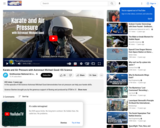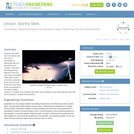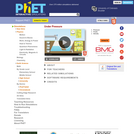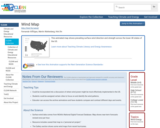
Astronaut Michael Good demonstrates how air pressure can help your karate skills.
- Subject:
- Physical Science
- Material Type:
- Activity/Lab
- Provider:
- National Air and Space Museum
- Author:
- National Air and Space Museum
- Date Added:
- 09/02/2022

Astronaut Michael Good demonstrates how air pressure can help your karate skills.

Students learn that wind and storms can form at the boundaries of interacting high and low pressure air masses. They learn the distinguishing features of the four main types of weather fronts (warm fronts, cold fronts, stationary fronts and occluded fronts) and how those fronts are depicted on a surface weather analysis, or weather map. Students also learn several different ways that engineers help with storm prediction, analysis and protection.

This unit explores Performance Expectations MS-ESS2-5 and MS-ESS2-6 to engage students in constructing an explanation through modeling and analyzing data for why so many tornados occur in the United States, and specifically ‘Tornado Alley!

This unit explores Performance Expectations MS-ESS2-5 and MS-ESS2-6 to engage students in constructing an explanation through modeling and analyzing data for why so many tornados occur in the United States, and specifically ‘Tornado Alley!

Explore pressure under and above water. See how pressure changes as you change fluids, gravity, container shapes, and volume.

Students are introduced to some essential meteorology concepts so they more fully understand the impact of meteorological activity on air pollution control and prevention. First, they develop an understanding of the magnitude and importance of air pressure. Next, they build a simple aneroid barometer to understand how air pressure information is related to weather prediction. Then, students explore the concept of relative humidity and its connection to weather prediction. Finally, students learn about air convection currents and temperature inversions. In an associated literacy activity, students learn how scientific terms are formed using Latin and Greek roots, prefixes and suffixes, and are introduced to the role played by metaphor in language development. Note: Some of these activities can be conducted simultaneously with the air quality activity (What Color Is Your Air Today?) of Air Pollution unit, Lesson 1.

This animated map shows prevailing surface wind direction and strength across the lower 48 states of the US.

The kids from the Yard have built a Wind Simulator that helps them see when the wind will pick up. They learn how low and high pressure systems work to create wind.